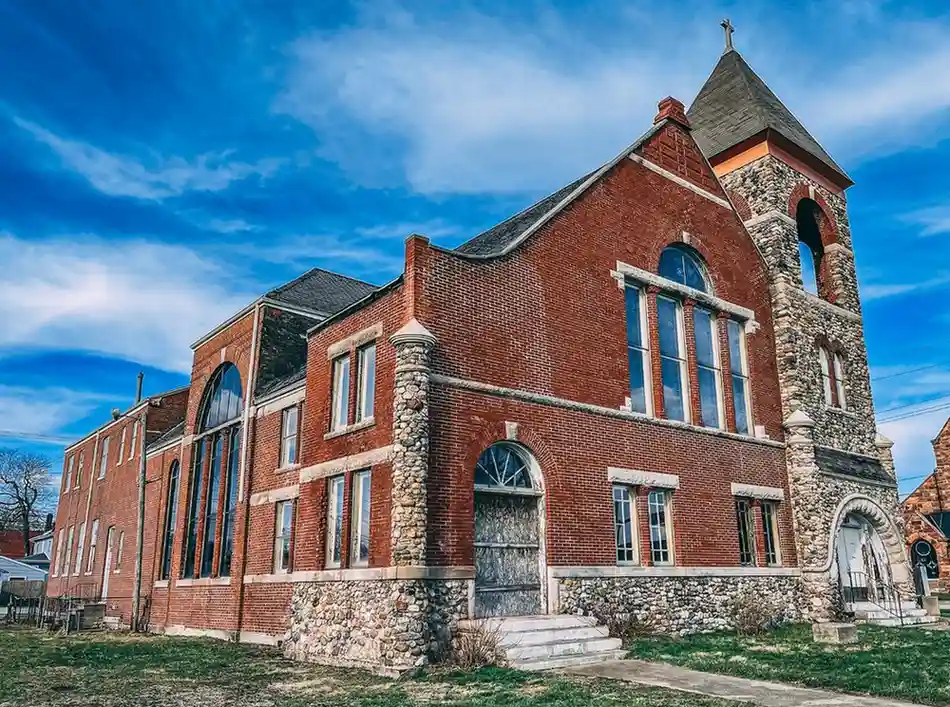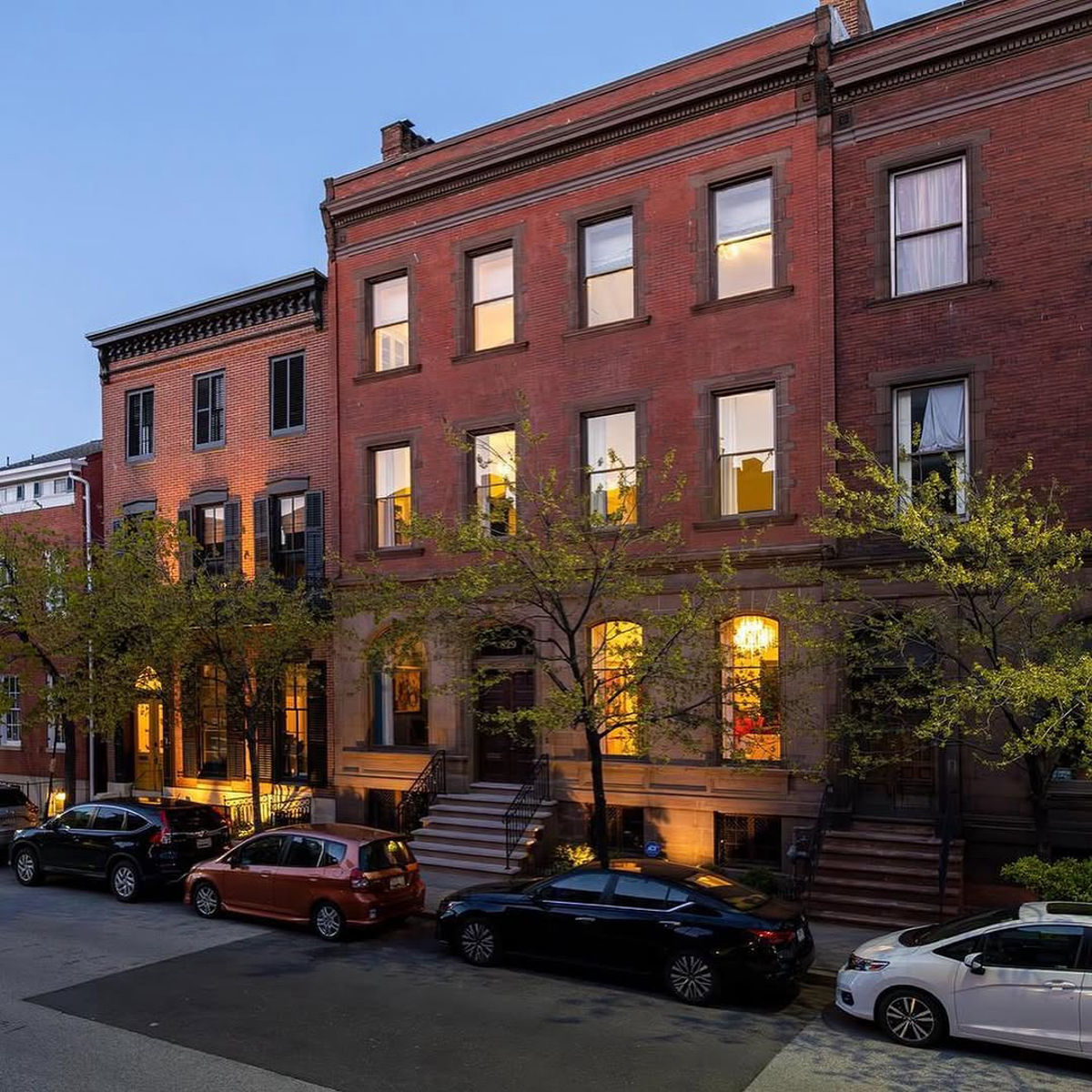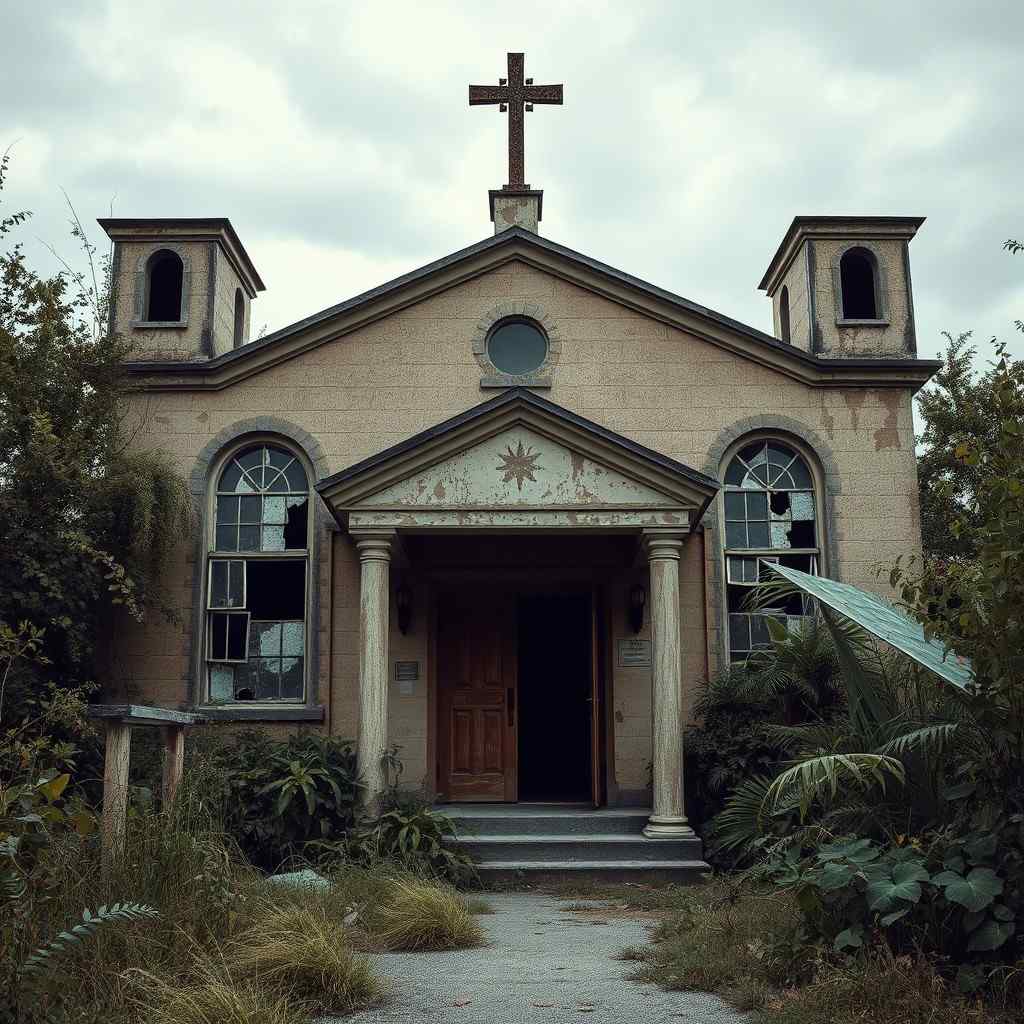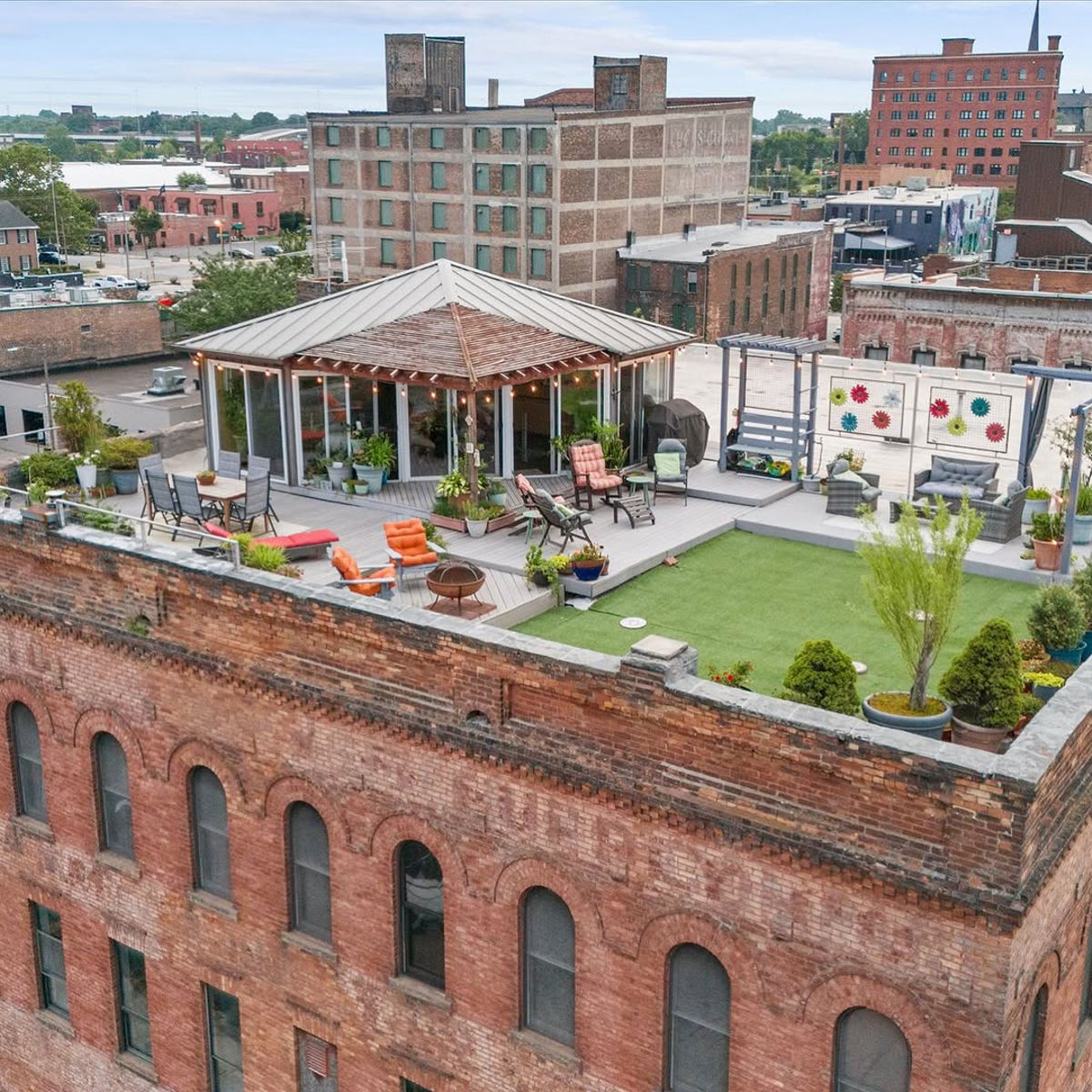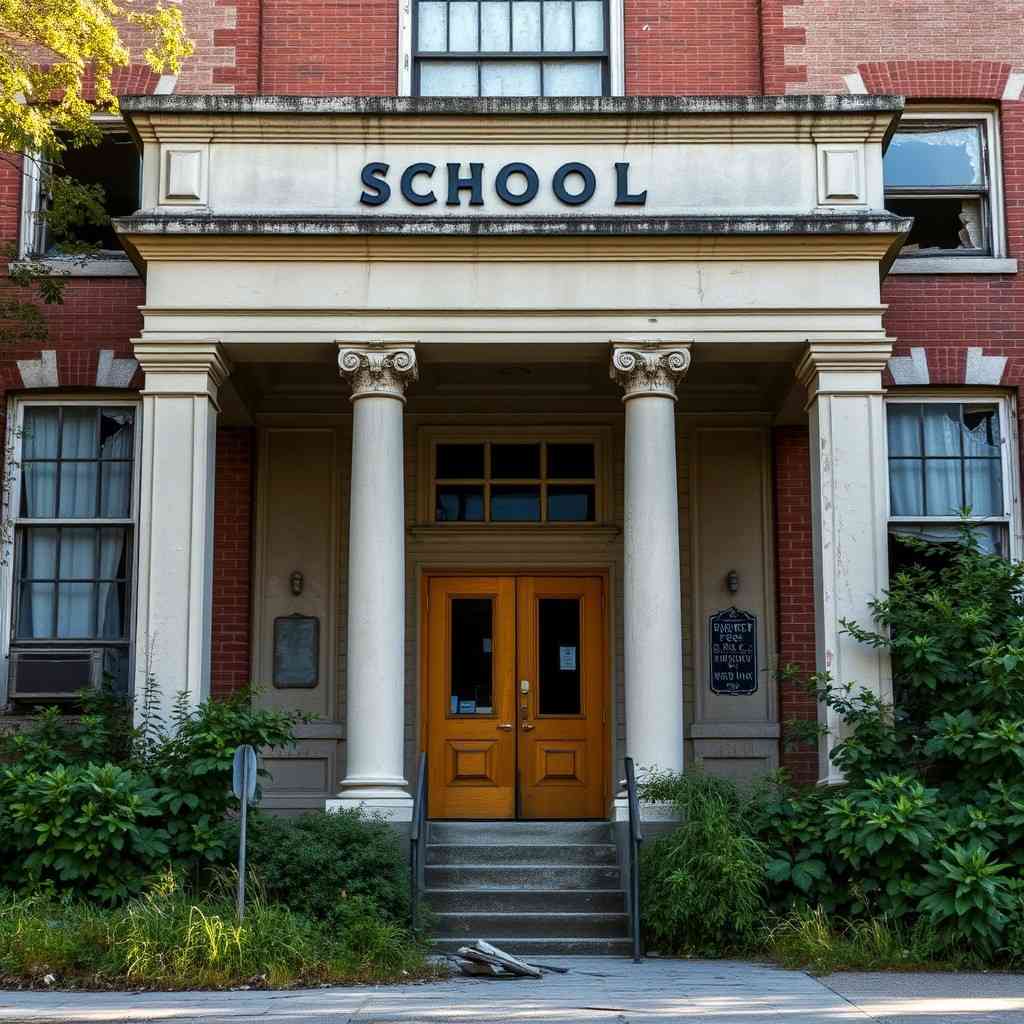Southern Illinois holds countless stories within its rolling hills and small communities, but perhaps none are as hauntingly beautiful as the abandoned churches that dot the landscape. These forgotten houses of worship, many featuring stunning chandeliers that once illuminated congregations in prayer, stand as silent testaments to the region’s rich religious heritage and changing demographics.
The Historical Context of Southern Illinois Churches
Southern Illinois experienced significant religious growth during the 19th and early 20th centuries, as waves of settlers established communities centered around faith. German, Irish, Italian, and other immigrant populations brought their religious traditions, constructing churches that reflected both their spiritual devotion and architectural heritage from their homelands.
The region’s agricultural prosperity during this period allowed communities to invest in elaborate church buildings, complete with imported fixtures, hand-carved woodwork, and magnificent lighting fixtures. Chandeliers, in particular, became symbols of divine light and community prosperity, often representing the congregation’s most significant financial investment beyond the building itself.
Economic and Social Factors Leading to Abandonment
The abandonment of these sacred spaces didn’t occur suddenly but resulted from decades of gradual change. Several key factors contributed to the decline of rural churches in Southern Illinois:
Rural population decline began accelerating in the mid-20th century as young people moved to urban areas for employment opportunities. Farm consolidation reduced the number of families living in rural communities, while improved transportation allowed remaining residents to travel to larger towns for worship services.
Denominational mergers and church consolidation efforts led many smaller congregations to combine with larger, more centrally located churches. Economic pressures made maintaining multiple buildings financially unsustainable for shrinking congregations, forcing difficult decisions about which properties to keep and which to abandon.
The costs associated with maintaining historic church buildings, including heating, cooling, structural repairs, and preservation of delicate fixtures like chandeliers, often exceeded the financial capabilities of dwindling congregations.





Architectural Significance of Abandoned Churches
The abandoned churches of Southern Illinois represent diverse architectural styles that reflect different periods of construction and cultural influences. These buildings showcase craftsmanship and attention to detail that modern construction rarely matches.
Gothic Revival Influences
Many of the region’s most striking abandoned churches feature Gothic Revival architecture, characterized by pointed arches, ribbed vaults, and elaborate stonework. These churches often incorporated elements designed to draw the eye heavenward, creating a sense of divine transcendence through architectural form.
The chandeliers in Gothic Revival churches were typically designed to complement the vertical emphasis of the architecture. Crystal or brass fixtures with multiple tiers created dramatic lighting effects that enhanced the spiritual atmosphere during evening services and special ceremonies.
Romanesque and Byzantine Elements
Some abandoned churches in Southern Illinois showcase Romanesque architecture with its characteristic rounded arches, thick walls, and massive appearance. Byzantine influences appear in churches built by Eastern European immigrant communities, featuring distinctive dome structures and rich decorative elements.
The chandeliers in these architectural styles often reflected the cultural traditions of the congregations. Orthodox churches might feature elaborate brass chandeliers with religious iconography, while Catholic churches incorporated fixtures that emphasized both beauty and liturgical function.
The Chandelier as Sacred Art
The beautiful chandeliers found in abandoned Southern Illinois churches represent more than mere lighting fixtures – they embody the intersection of art, faith, and community aspiration. These magnificent pieces often served as focal points for worship and symbols of divine illumination.
Types of Church Chandeliers
Crystal Chandeliers: Many abandoned churches feature elaborate crystal chandeliers that were often imported from Europe or manufactured by prestigious American companies. These fixtures created prismatic light effects that symbolized divine radiance and heavenly beauty.
Brass and Bronze Fixtures: Solid brass or bronze chandeliers provided durability and rich, warm lighting. These fixtures often incorporated religious symbols, scrollwork, and multiple candle-style bulbs that created intimate, contemplative atmospheres.
Wrought Iron Pieces: Some churches featured handcrafted wrought iron chandeliers that reflected local metalworking traditions. These fixtures often combined rustic charm with elegant design elements.
Art Glass Combinations: Chandeliers incorporating stained glass elements created unique lighting effects that complemented the churches’ stained glass windows, producing cohesive visual experiences throughout the worship space.
Symbolic Significance
In Christian tradition, light holds profound symbolic meaning, representing divine presence, spiritual enlightenment, and hope. Church chandeliers served as physical manifestations of these concepts, with their elevated position and radiant illumination creating visual metaphors for heavenly light descending to earth.
The craftsmanship invested in these fixtures reflected the congregation’s devotion and their desire to honor God through beautiful worship environments. Communities often saved for years to purchase elaborate chandeliers, viewing them as essential investments in their spiritual lives.





Notable Abandoned Churches in Southern Illinois
Regional Distribution and Characteristics
Southern Illinois contains numerous abandoned churches scattered across rural counties, each with unique architectural features and historical significance. These buildings represent different denominations, ethnic communities, and historical periods that shaped the region’s religious landscape.
The concentration of abandoned churches is particularly notable in counties that experienced significant population decline, such as Pope, Johnson, Massac, and Pulaski counties. Many of these areas were once thriving agricultural communities that supported multiple churches within small geographic areas.
Preservation Status and Challenges
The condition of abandoned churches varies dramatically depending on factors such as:
- Length of time since abandonment
- Exposure to weather through damaged roofs or windows
- Vandalism and unauthorized access
- Previous maintenance history
- Local preservation efforts
Beautiful chandeliers in these churches face particular threats from theft, weather damage, and deterioration of mounting systems. The value of antique lighting fixtures makes them targets for salvage, while exposure to moisture and temperature fluctuations can damage delicate components.
Conservation Challenges and Opportunities
Preserving abandoned churches presents unique challenges that differ from other historic building types. The sacred nature of these spaces, combined with their often-remote locations and specialized architectural features, requires careful consideration of preservation strategies.
Structural Preservation Issues
Church buildings often feature large, open interior spaces with complex roof systems that are expensive to maintain. Steeples, bell towers, and other vertical elements face particular vulnerability to weather damage and structural failure over time.
The preservation of chandeliers within these spaces requires addressing both the building envelope and the specific mounting and electrical systems that support these fixtures. Many beautiful chandeliers have been lost due to structural failures that could have been prevented with timely intervention.
Documentation and Cataloging Efforts
Historical preservation organizations, local historical societies, and academic researchers work to document abandoned churches before further deterioration occurs. This documentation includes:
- Architectural surveys and photographic records
- Historical research on congregations and construction
- Detailed cataloging of significant fixtures and artwork
- Oral history collection from former congregation members
Adaptive Reuse Possibilities





Some abandoned churches have found new life through creative adaptive reuse projects that preserve their architectural character while serving contemporary community needs. Successful conversions have included:
- Community centers maintaining worship spaces for events
- Arts venues utilizing acoustics and atmospheric qualities
- Museums dedicated to local history and religious heritage
- Residential conversions preserving architectural details
- Event spaces for weddings and community gatherings
The beautiful chandeliers often become centerpiece features in these adaptive reuse projects, providing unique character that attracts visitors and enhances the economic viability of preservation efforts.
Community Impact and Cultural Memory
The abandonment of churches affects rural Southern Illinois communities in profound ways that extend beyond the loss of religious services. These buildings served as community anchors that hosted social gatherings, cultural events, and important life ceremonies that shaped local identity.
Loss of Community Gathering Spaces
Churches traditionally provided venues for:
- Wedding ceremonies and receptions
- Funeral services and memorial gatherings
- Community meetings and civic events
- Holiday celebrations and seasonal festivals
- Youth activities and educational programs
When these spaces are abandoned, communities lose important venues for social cohesion and cultural continuity.
Impact on Local Identity
Historic churches often serve as visual landmarks that help define community character and identity. The distinctive silhouettes of church steeples and the warm glow of chandelier-lit windows during evening services created iconic images associated with small-town life in Southern Illinois.
The deterioration or loss of these visual anchors contributes to a sense of community decline and loss of historical connection that affects residents’ pride and attachment to their hometowns.
Urban Exploration and Photography
Abandoned churches in Southern Illinois have attracted photographers, historians, and urban exploration enthusiasts who document these forgotten sacred spaces. The combination of architectural beauty, historical significance, and atmospheric decay creates compelling subjects for artistic and documentary photography.
Photographic Documentation Value
Professional photographers and artists have created important visual archives that preserve the memory of these spaces and their beautiful chandeliers. These images serve multiple purposes:
- Historical preservation through visual documentation
- Artistic interpretation of decay and memory themes
- Advocacy for preservation and restoration efforts
- Educational resources for architectural and religious history
Safety and Legal Considerations
Exploring abandoned churches requires careful attention to safety and legal issues:
- Structural instability from deferred maintenance
- Presence of hazardous materials like asbestos or lead paint
- Trespassing laws and property rights
- Respect for sacred spaces and community sensitivities
- Insurance and liability concerns
Responsible documentation requires obtaining proper permissions, using appropriate safety equipment, and showing respect for the religious significance of these spaces.
The Role of Chandeliers in Church History






The evolution of church lighting reflects broader changes in technology, economics, and religious practices that shaped American religious life. Understanding the history of church chandeliers provides insights into congregation priorities, community prosperity, and changing worship styles.
Historical Development of Church Lighting
Early American churches relied on natural light supplemented by candles or oil lamps for evening services. The introduction of gas lighting in the mid-19th century allowed for more elaborate fixtures, while the arrival of electricity enabled the magnificent chandeliers that characterize many abandoned churches today.
The period from 1880 to 1930 represents the golden age of church chandelier installation, coinciding with peak prosperity in many Southern Illinois communities. Congregations competed to install the most beautiful fixtures, viewing them as expressions of faith and community pride.
Manufacturing and Design Traditions
Many church chandeliers were produced by specialized manufacturers who understood the unique requirements of religious spaces. Companies like Mitchell Vance & Company, Edward F. Caldwell & Co., and regional manufacturers created fixtures specifically designed for church acoustics, ceiling heights, and liturgical functions.
The design of church chandeliers often incorporated religious symbolism through:
- Cross motifs and religious iconography
- Numbers of lights reflecting biblical significance
- Materials chosen for symbolic meaning
- Proportions designed to complement sacred architecture
Current Preservation Efforts
Various organizations and individuals work to preserve Southern Illinois’ abandoned churches and their beautiful chandeliers. These efforts face significant challenges but have achieved notable successes in saving important examples of religious architecture.
Organizational Preservation Initiatives
Landmarks Illinois provides advocacy and technical assistance for threatened historic properties, including churches. The organization offers resources for communities seeking to preserve or adaptively reuse historic religious buildings.
Local Historical Societies throughout Southern Illinois work to document and preserve church history, often maintaining archives of photographs, records, and artifacts from abandoned congregations.
Religious Heritage Organizations focus specifically on preserving the history and architecture of different denominational traditions, providing specialized expertise for church preservation projects.
Funding and Grant Opportunities
Preservation efforts often rely on grant funding from various sources:
- Illinois Historic Preservation Agency grants
- National Park Service preservation programs
- Private foundation support for religious heritage
- Community fundraising and volunteer efforts
- Adaptive reuse development projects
The unique challenges of church preservation require creative funding approaches that address both the sacred nature of these spaces and their architectural significance.
Future Prospects and Recommendations
The fate of Southern Illinois’ abandoned churches depends on community action, preservation advocacy, and creative solutions that balance respect for religious heritage with practical reuse possibilities.
Prioritization Strategies
Given limited resources, preservation efforts must focus on the most significant and salvageable examples of church architecture. Priority should be given to:
- Churches with unique architectural features or historical significance
- Buildings with intact chandeliers and other significant fixtures
- Structures that could serve viable community functions
- Properties with strong local support for preservation
Documentation as Preservation
Even when physical preservation is not possible, thorough documentation ensures that the memory and significance of these churches and their beautiful chandeliers are preserved for future generations. This includes:
- Detailed architectural surveys and photography
- Historical research and oral history collection
- 3D scanning and digital preservation techniques
- Creation of public archives and educational resources
Frequently Asked Questions






Why were so many churches abandoned in Southern Illinois?
Churches in Southern Illinois were abandoned primarily due to rural population decline, economic challenges facing small congregations, and denominational consolidation efforts. As young people moved to urban areas for work and farming communities shrank, many churches could no longer sustain the membership or financial resources needed to maintain their buildings and programs.
What makes the chandeliers in these churches so special?
The chandeliers in abandoned Southern Illinois churches are remarkable for their craftsmanship, historical significance, and symbolic meaning. Many were imported from Europe or manufactured by prestigious American companies during the late 19th and early 20th centuries. These fixtures often feature intricate crystal work, hand-forged metalwork, and designs that incorporate religious symbolism, making them both beautiful art pieces and important historical artifacts.
Are these abandoned churches safe to visit?
Visiting abandoned churches can be dangerous due to structural deterioration, unstable floors or ceilings, broken glass, and other hazards. Additionally, most abandoned churches remain private property, making unauthorized access illegal trespassing. Anyone interested in documenting or visiting these spaces should obtain proper permissions and use appropriate safety equipment.
What happens to the chandeliers when churches are abandoned?
The fate of chandeliers in abandoned churches varies widely. Some remain in place and deteriorate due to weather exposure and vandalism. Others are removed by former congregation members, sold to antique dealers, or stolen by thieves attracted to their value. In successful preservation or adaptive reuse projects, chandeliers are often restored and remain as centerpiece features of the converted spaces.
Can abandoned churches be converted to other uses?
Yes, many abandoned churches have been successfully converted to community centers, event venues, residences, museums, and arts spaces. However, conversion requires significant investment to address building code compliance, structural issues, and modern utility needs while preserving architectural character. The beautiful chandeliers often become selling points for these adaptive reuse projects.
How can communities preserve their abandoned churches?
Communities can preserve abandoned churches through various approaches including forming preservation committees, seeking grant funding, partnering with developers for adaptive reuse, documenting history and architecture, and advocating for landmark designation. Success often requires combining community support with professional preservation expertise and creative funding strategies.
What architectural styles are represented in Southern Illinois’ abandoned churches?
Abandoned churches in Southern Illinois represent various architectural styles including Gothic Revival, Romanesque Revival, Colonial Revival, and vernacular interpretations of these formal styles. The diversity reflects different periods of construction, denominational preferences, and cultural influences from various immigrant communities that settled in the region.
Are there any successful examples of church preservation in Southern Illinois?
Yes, several Southern Illinois churches have been successfully preserved or adaptively reused, though specific examples vary by community. Success stories often involve converting churches to community centers, event venues, or museums while preserving key architectural features like chandeliers, stained glass windows, and sacred spaces for appropriate community uses.
Conclusion: Preserving Sacred Heritage
The abandoned churches of Southern Illinois, with their magnificent chandeliers casting shadows instead of light, represent more than empty buildings – they embody the spiritual aspirations, community pride, and cultural heritage of generations of rural residents. These sacred spaces tell stories of faith, immigration, prosperity, and change that shaped the character of Southern Illinois communities.
The beautiful chandeliers that once illuminated congregations in worship now serve as poignant reminders of vibrant religious life that sustained these communities through both prosperity and hardship. Their craftsmanship reflects the devotion of congregations who invested their resources in creating beautiful worship environments that honored their faith and expressed their hope for the future.
As Southern Illinois continues to grapple with rural population decline and economic challenges, the preservation of these abandoned churches becomes increasingly urgent. While not every building can be saved, identifying and protecting the most significant examples ensures that future generations can understand and appreciate the role of religious architecture in shaping regional identity and community life.
The challenge lies in finding creative solutions that respect the sacred nature of these spaces while adapting them for contemporary community needs. Whether through restoration for continued religious use, adaptive reuse for community purposes, or thorough documentation for historical preservation, these churches and their beautiful chandeliers deserve recognition as important cultural resources that connect past, present, and future.
The light that once emanated from these chandeliers may have dimmed, but the legacy of faith, craftsmanship, and community spirit they represent continues to illuminate the importance of preserving our shared religious and architectural heritage. In saving these sacred spaces, communities not only preserve buildings but maintain connections to the values, traditions, and aspirations that built Southern Illinois and continue to define its character today.
![]()
